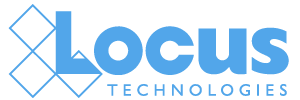Tag Archive for: EHS
Locus software support is now even better
Locus has recently improved our help desk support system, with improved visibility and resources for all of our customers.
Compliance Minute – Assuring Delivered Application Quality
Locus has recently improved our help desk support system, with improved visibility and resources for all of our customers.
Stay on top of your EHS compliance tasks
Marian Carr, Senior Vice President at Locus Technologies, shows you how to use the Bookmarks tool in Locus Platform.
Automatically generate your soil lithology and well logs
Learn about the annual and periodic materiality assessment where system users rank based on their impact and relevance to the organization.
Software to simplify your ESG materiality assessment
Learn about the annual and periodic materiality assessment where system users rank based on their impact and relevance to the organization.
Incident Management Software and How It Can Save You Time
Blaze Ison, Customer Success Manager at Locus Technologies, shares how our Incident Management application can simplify your life.
Tag Archive for: EHS
Nothing Found
Sorry, no posts matched your criteria
Locus Technologies » EHS » Page 13
Locus Technologies
299 Fairchild Drive
Mountain View, CA 94043
P: +1 (650) 960-1640
F: +1 (415) 360-5889
Locus Technologies provides cloud-based environmental software and mobile solutions for EHS, sustainability management, GHG reporting, water quality management, risk management, and analytical, geologic, and ecologic environmental data management.
